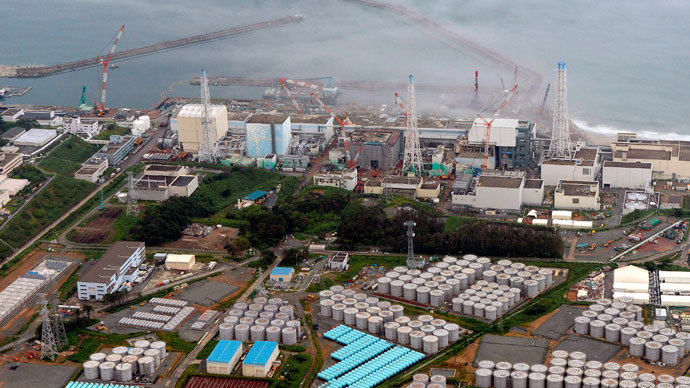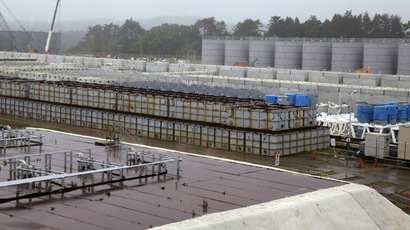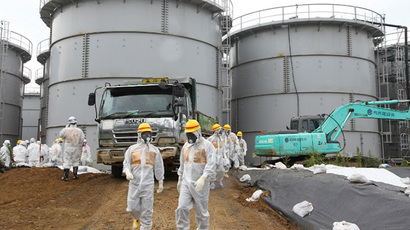Japan pledges over $470mn to remedy Fukushima nuclear crisis

Japan is to spend US$473 million to contain leaks of radioactive water from the disaster-struck Fukushima nuclear plant, as the government struggles to tackle the nuclear crisis.
The government is to spend "tens of billions" of yen to deal with the water crisis after the beleaguered operator of the plant, Tokyo Electric Power Co (TEPCO), stated it discovered another radiation center, Trade and Economy Minister Toshimitsu Motegi said in a televised interview. "Tokyo Electric has been playing a game of whack-a-mole with problems at the site."
A package of new measures on how to deal with the ongoing crisis at the Fukushima plant, which was besieged by a massive earthquake and tsunami in March 2011, are set to be announced on Tuesday.
The total amount pledged is set at 47 billion yen ($473 million), according to Japanese media.
The package includes the construction of a massive underground wall worth US$320,000 to contain groundwater flows. The building of the wall will entail freezing a perimeter of earth around the damaged reactors to stop the groundwater mixing with water being used to cool the melted fuel rods.
Another US$150,000 will be spent on a new system that would dramatically decrease radiation levels in the contaminated water.
Japan’s government faces criticism over how TEPCO dealt with the crisis as it awaits Saturday’s decision by the International Olympic Committee on Tokyo's bid to host the 2020 summer Olympics.
Just on Saturday several new hotspots reading potentially lethal doses of radiation have been detected near the tanks storing the radioactive water, forcing TEPCO to admit there might be even more leaks at the crippled Fukushima nuclear power plant.
The operator said that the radiation levels of 1,800 millisieverts per hour near a leaking tank holding contaminated water was 18-times worse than previously believed - a level that could prove fatal within four hours of exposure.
On Monday, TEPCO announced that it might have to dump contaminated cooling water from the plant into the Pacific, local media reported.
The operator is proposing a controlled discharge after the toxicity is brought within legal limits.
But, just last week the plant operator disclosed that at least one of the 1,060 temporary tanks used to store highly contaminated water sprang a leak discharging as much as 300 tons of radioactive liquid containing large amounts of cesium.
Following the incident Japan’s Nuclear Regulation Authority raised the rating of the water leak to Level 3 – a "serious incident" on an international scale of radioactivity from the previously assigned Level 1, an “anomaly.”














